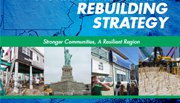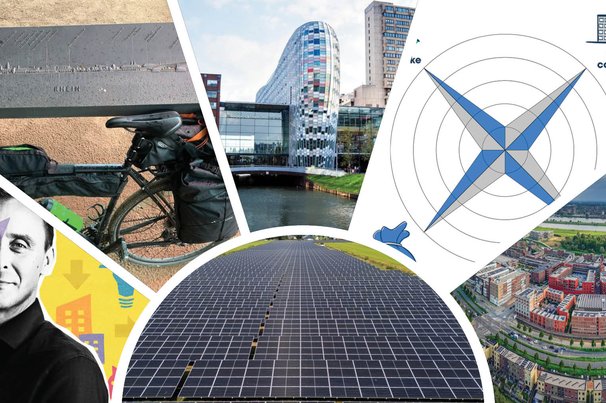Nieuws Strategy will ensure families, small businesses and communities are stronger, more economically competitive and better able to withstand future storms, and serve as a model for communities across the country
WASHINGTON - President Obama’s Hurricane Sandy Rebuilding Task Force, chaired by Housing and Urban Development (HUD) Secretary Shaun Donovan, today released a rebuilding strategy to serve as a model for communities across the nation facing greater risks from extreme weather and to continue helping the Sandy-affected region rebuild. The Rebuilding Strategy contains 69 policy recommendations, many of which have already been adopted, that will help homeowners stay in and repair their homes, strengthen small businesses and revitalize local economies and ensure entire communities are better able to withstand and recover from future storms. Read more.
"I want to thank Secretary Donovan, the Hurricane Sandy Rebuilding Task Force, and the thousands of federal response and recovery personnel who have helped the region recover. We have cut red tape, piloted cutting edge programs and strengthened our partnership with state and local officials," President Obama said. "While a great amount of work remains, we will stand with the region for as long as it takes to recover."
"President Obama was clear that his Administration is committed to staying in the Sandy-impacted region until the work was done, and today marks a crucial step in that journey," Secretary Donovan said. "This Rebuilding Strategy will protect families, small businesses and communities across the region, and the taxpayers’ investment in them, from the risks posed by sea level rise and more extreme weather events – risks that are made worse by the reality of a changing climate."
Among the recommendations that will have the greatest impact on Federal funding is a process to prioritize all large-scale infrastructure projects and map the connections and interdependencies between them, as well as guidelines to ensure all of those projects are built to withstand the impacts of climate change. The Strategy also explores how to harden energy infrastructure to minimize power outages and fuel shortages – and ensure continuation of cellular service – in the event of future storms.
The goal of these and other recommendations in the Strategy is to:
- Align federal funding with local rebuilding visions.
- Cut red tape and get assistance to families, businesses, and communities efficiently and effectively, with maximum accountability.
- Coordinate the efforts of the Federal, State, and local governments, with a region-wide approach to rebuilding.
- Ensure the region is rebuilt in a way that makes it more resilient – that is, better able to withstand future storms and other risks posed by a changing climate.
In addition to the recommendations that are directly linked to Sandy Supplemental funding, the Rebuilding Strategy also includes additional policy recommendations that will have a significant impact on how the region rebuilds. Finally, in recognition of the increased risk the region and the nation face from extreme weather events, the Rebuilding Strategy includes recommendations that, if implemented, will improve our ability to withstand and recover effectively from future flood-related disasters across the country.
Several of the policies and principles developed by the Hurricane Sandy Rebuilding Task Force were also incorporated into President Obama’s Climate Action Plan, which laid out a series of responsible and common sense steps to prepare communities for the impacts of a changing climate, including the need for the Federal government to make investments based on the most up to date information about future risks.
As laid out in the Rebuilding Strategy, the Task Force has also taken steps to ensure the implementation of these recommendations, each of which will be carried out by a Federal Department or Agency or an existing interagency working group. Implementation will be tracked by a team which will also build on the Task Force Program Management Office’s work to track and release data on Federal spending from the Sandy supplemental funding bill.
Cover: ‘2013.09.15_Hurricane Ssandy Rebuilding Task Force releases rebuilding strategy_180’




